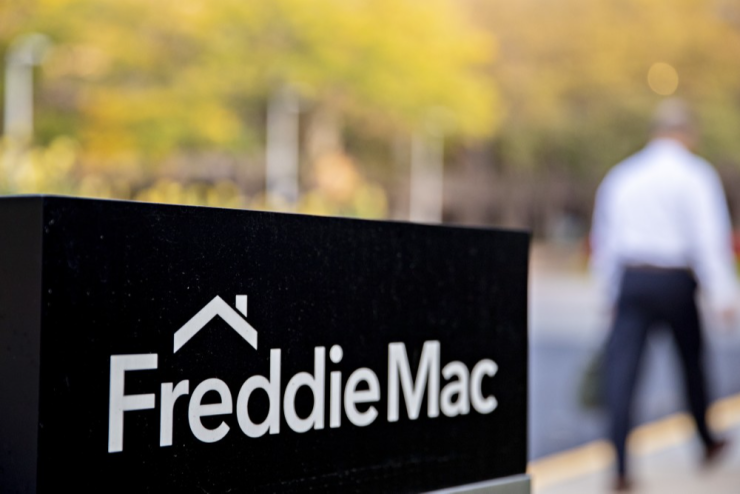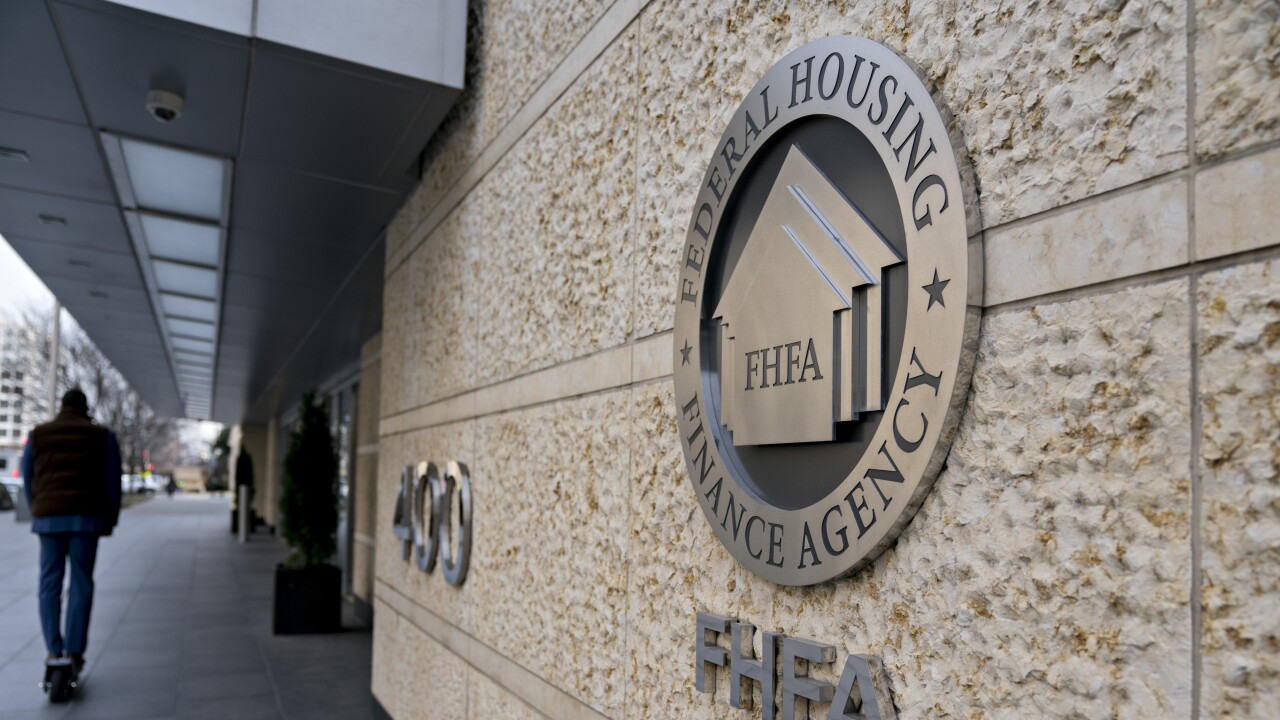WASHINGTON — The recent announcement that Fannie Mae and Freddie Mac will be allowed to keep profits for the first time since 2012 was seen as a crucial early step in reforming the mortgage giants. But the news immediately shifted focus to a bigger question about their financial standing.
Under the
Yet ending the "net worth sweep" improves Fannie and Freddie's capital only in the short term. As policymakers grapple with how to re-privatize the GSEs and reform the housing finance system over the long term, the Sept. 30 news had many wondering how high their capital truly needs to climb to be sustainable.
"If we were to take a snapshot, maybe we’re looking at somewhere between $100 and $200 billion depending on how risky you think their mortgage portfolio is," said Deeksha Gupta, an assistant professor of finance at Carnegie Mellon University.

Gupta said Fannie and Freddie's capital levels as private-sector companies would be determined in part by how much risk they add to their balance sheet.
"There’s something a little bit deeper there, where once they become privatized, the mortgages that they decide to purchase and the risk that they decide to take on might look very different from what their current portfolio looks like," she said. "That may make us want them to hold more capital if we don’t want a repeat of the 2008 housing crisis.”
Suspension of the net worth sweep was carried out by an agreement between the Federal Housing Finance Agency and Treasury Department. It leaves the GSEs with a capital infusion that many say was long overdue.
But the remaining question is the level of capital that regulators are aiming for the GSEs to hold before they would feel comfortable releasing them from government control, and how quickly Fannie and Freddie would be able to amass that amount.
“I think it’s kind of good to know what level they are going to retain earnings up to,” said Ed Mills, a policy analyst at Raymond James. “After that, the biggest question is, what are the total capital standards, because the capital standards are going to exceed the amount of retained earnings here.”
FHFA Director Mark Calabria has said one of his main goals as head of the agency that regulates Fannie and Freddie is to ensure that the two are adequately capitalized.
“As a regulator, my primary concern is that the GSEs maintain capital levels commensurate with their risk profiles,” he said in a speech in May. “And over time I think Fannie and Freddie ought to operate under essentially the same capital rules as other large financial institutions.”
It has been estimated that Fannie and Freddie would need to raise at least $100 billion combined, but that amount could actually be much higher if the government decided it wanted the companies to hold bank-like capital, said Gupta.
Banks typically are required to retain about 4% in capital based on their outstanding mortgage exposure. If those same rules were to apply to Fannie and Freddie’s $5 trillion in assets, they would need $200 billion in capital, she said.
“Obviously $20 billion and $25 billion is very low compared to that, so it’s going to take a while,” she said.
Calabria even conceded last month that it would
That is why FHFA and Treasury are exploring options for Fannie and Freddie to build capital beyond retained earnings. In Treasury’s
The 2012 net worth sweep was part of changes to the preferred stock purchase agreements dealing with the government's stake in the mortgage giants. Additional amendments to those agreements would answer questions about the government’s ideal capital levels and how officials envision Fannie and Freddie reaching that point, said Ron Haynie, senior vice president of mortgage finance policy for the Independent Community Bankers of America.
“The sooner they can get that amendment done and get that in place, the marketplace will know what to expect and what the road to recapitalization looks like,” he said. “I think those are all positives, and you can get the process moving forward.”
In the meantime, there will be a renewed interest in Fannie and Freddie’s profits and how long it will take the two companies to reach the combined $45 billion in earnings they will be allowed to retain.
In 2018, Fannie Mae reported $15.6 billion in earnings, while Freddie Mac reported $8.6 billion.
Still, Haynie believes the GSEs could be able to reach the $25 billion and $20 billion mark within the next year.
“Since there’s a number being put out there now, it enables them to make probably some decisions around expenses, managing their expenses, managing their business probably a little closer than they have had to in the past, and I think it’ll force some disciplines that are healthy for them,” he said.
However, some have argued that policymakers' interest in limiting Fannie and Freddie's footprint could make it difficult for the two companies build capital through profits. Still, Gupta said there are other ways for the two companies to boost their earnings.
“The sustainable way to do it would obviously be just to kind of look for good lending opportunities,” she said. “If the Fed lowers interest rates, if that gets passed on to consumers, that would lower mortgage rates and that might increase the demand for mortgages. So obviously something like that could be good for Fannie and Freddie as well.”
That, combined with rising home prices, could help Fannie and Freddie increase their mortgage activity, she said.
The “general economy” will also decide how fast Fannie and Freddie can reach their new capital limits, said Haynie. He argued that it could even be favorable to the companies if the Fed were to raise interest rates.
“We’ll have to see how the market goes,” he said. “If rates rise a little, that means prepayments will slow, so that would be positive for them. On the other hand, originations would probably slow some too, but right now when prepayments are higher, that’s harder on them actually than it is in a rising rate environment.”
As for what is next, that remains an all-too-familiar question for observers of the never-ending battle to reform Fannie and Freddie.
“What’s next is what it’s always been,” said Mills. “GSE reform is an incremental process."





